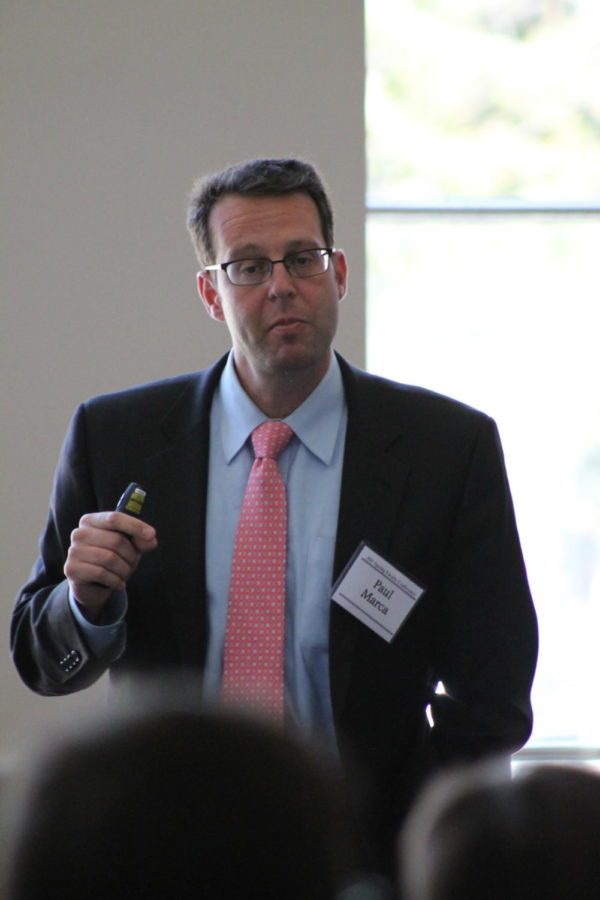Faculty Senate discusses online learning opportunities
Richard Martinez/Iowa State Daily
Paul Marca, executive director for the Center for Professional Development at Stanford University, gave a keynote lecture on innovative online learning platforms that have taken over the traditional classroom. Marca provided insight to faculty and professors oh how they can promote successful online learning at the Faculty Senate meeting April 22.
April 23, 2014
Faculty and staff discussed online learning and distance education April 22 at the spring faculty conference.
Every other spring as part of the Faculty Senate, a topic is open for discussion at a conference. All staff and faculty were welcome to attend to become more aware of the resources available to them for online and distance education.
Faculty Senate members decided on the topic because of its prevalence at the university.
“A lot of people confuse online learning and distance education,” said Paul Componation, professor of industrial and manufacturing systems engineering and leader of the conference agenda. “Online learning can be anything that a professor posts online for any class, whereas with distance education, everything is on the Web.”
Kevin Schalinske, president of Faculty Senate, said he believes the university will be more involved in online learning in the future.
“I think there’s clearly going to be an online education component with the university, and that can take a lot of different shapes and forms,” Schalinske said.
Scheduling conflicts can often cause students to have to stay at the university for longer than expected. Online learning can help students take classes more effectively.
“The amount of online support that we do is definitely increasing,” Componation said. “I think we have enough resources, but the popularity of it keeps growing, and it can be hard to keep up with.”
Many programs are entirely available online. Online programs are taught by the same instructors that are teaching in the classroom.
“It’s a matter of a professor trying to explore what possibilities there are, and we do have the resources on campus to at least get them started,” Schalinske said.
Students are recommended to only take two or three courses in a given semester because of the intensity of the course work.
“Traditionally having face-to-face contact increases student success in the classroom,” Schalinske said.
“We’re talking about having flipped and blended classrooms, to have different ways to engage the students,” said Schalinske.
More content will be available online, which will help students who have scheduling conflicts or who are having trouble in the course.
“It’s really adding to the face-to-face, not replacing it totally,” Schalinske said.
”There are resources on campus available for faculty to try to help their students engage besides just lecturing,” Schalinske said about teaching styles. “I think that that is going to increase.”
The university recognizes that resources are important to faculty and staff for a better learning environment.
“Doing an online course effectively takes as much resources and time as doing a live class,” Componation said. “So it helps with some of the capacity issues, but you still have the issue of getting enough resources to do it well.”
Schalinske said online learning may not be recommended for all students.
“Different types of things are going to work for different types of classes,” Schalinske said. “It’s really finding your niche.”







